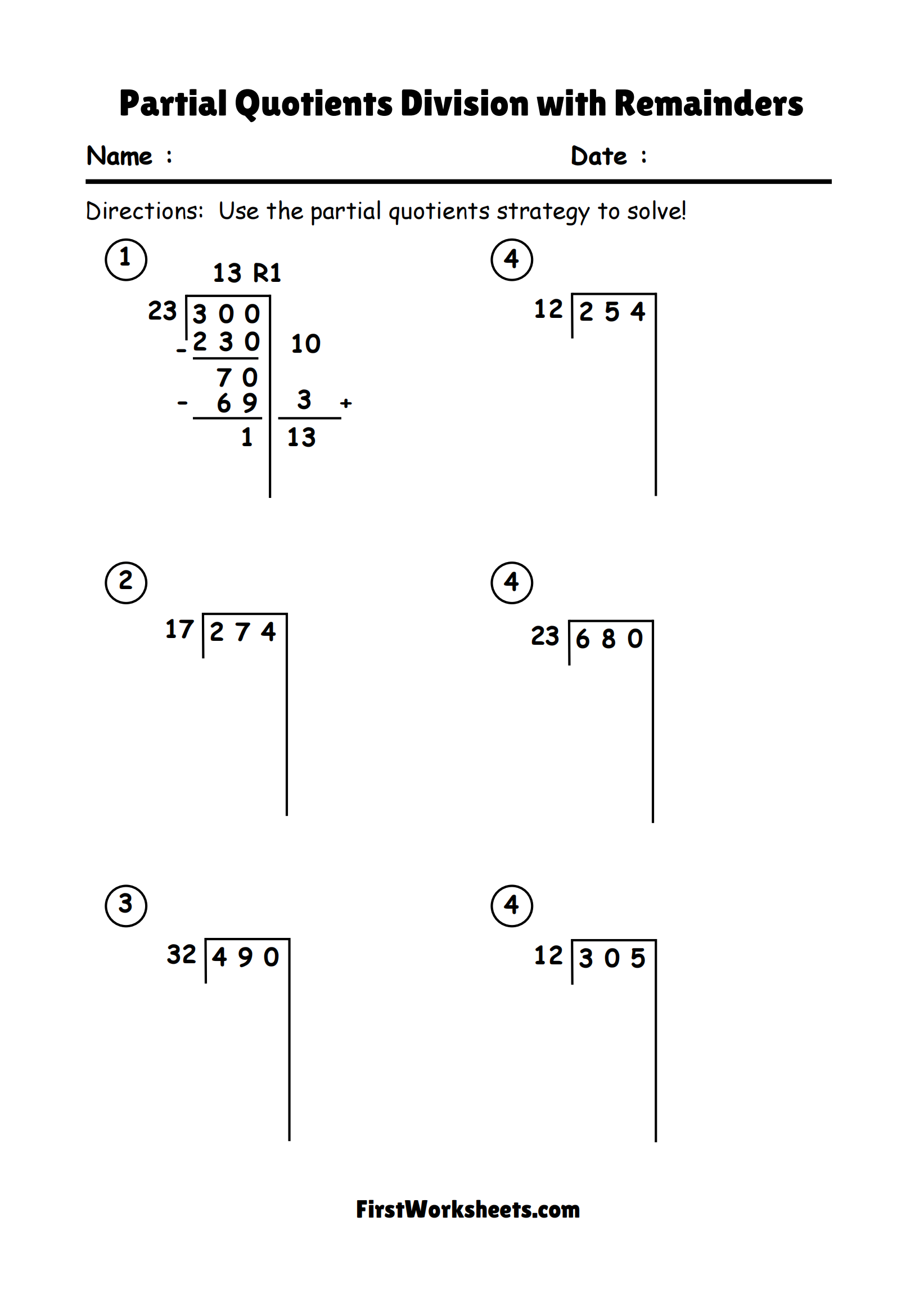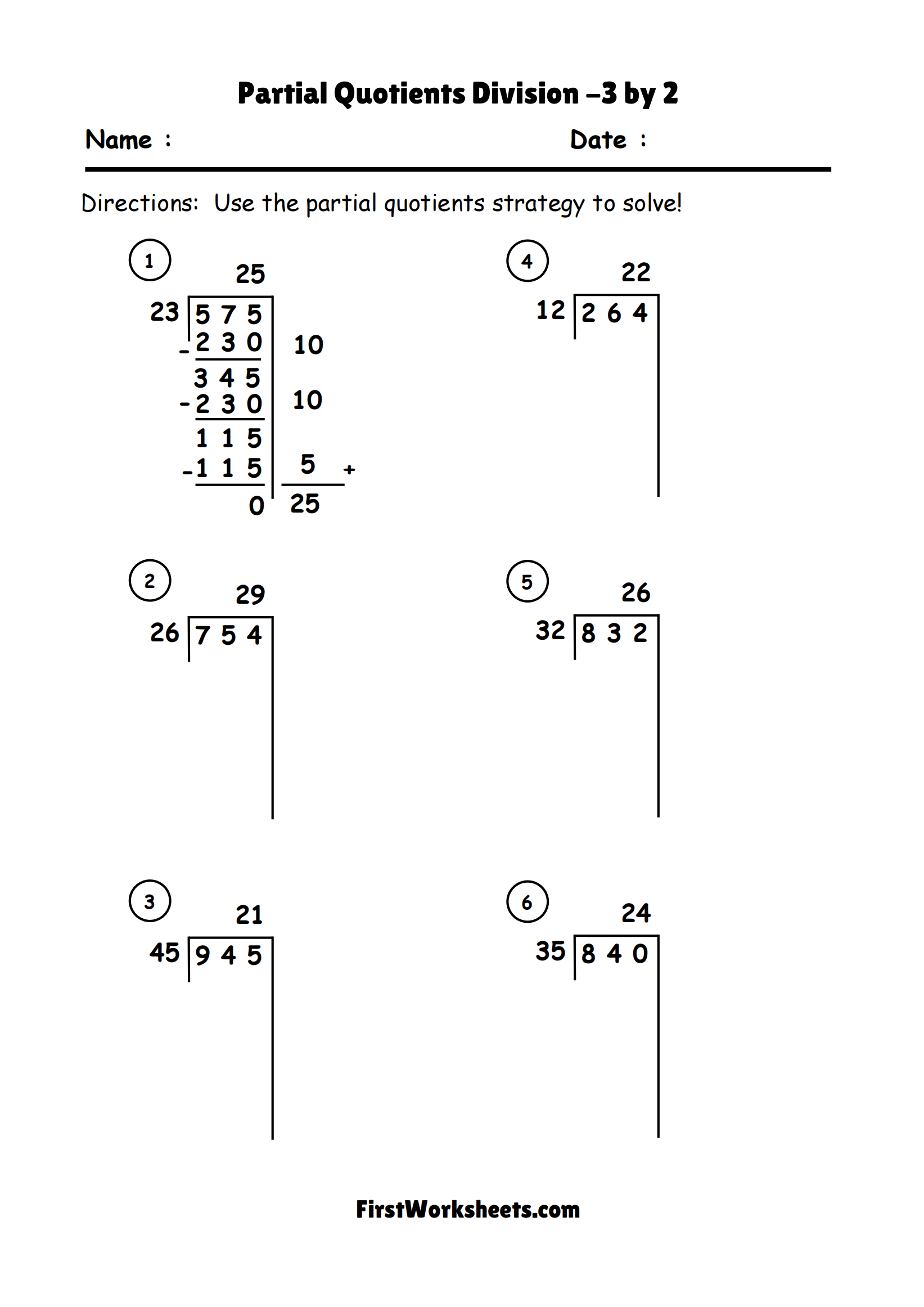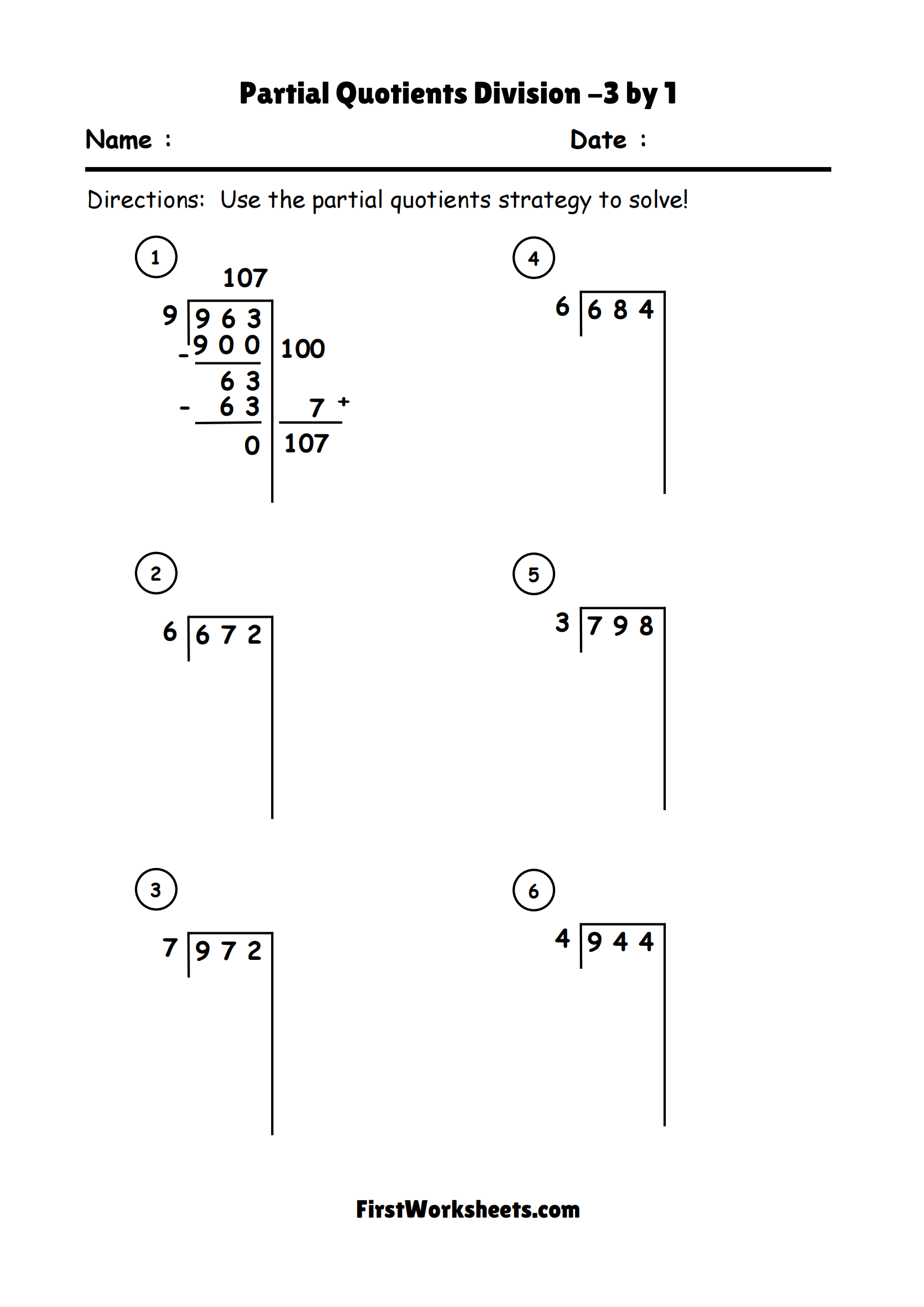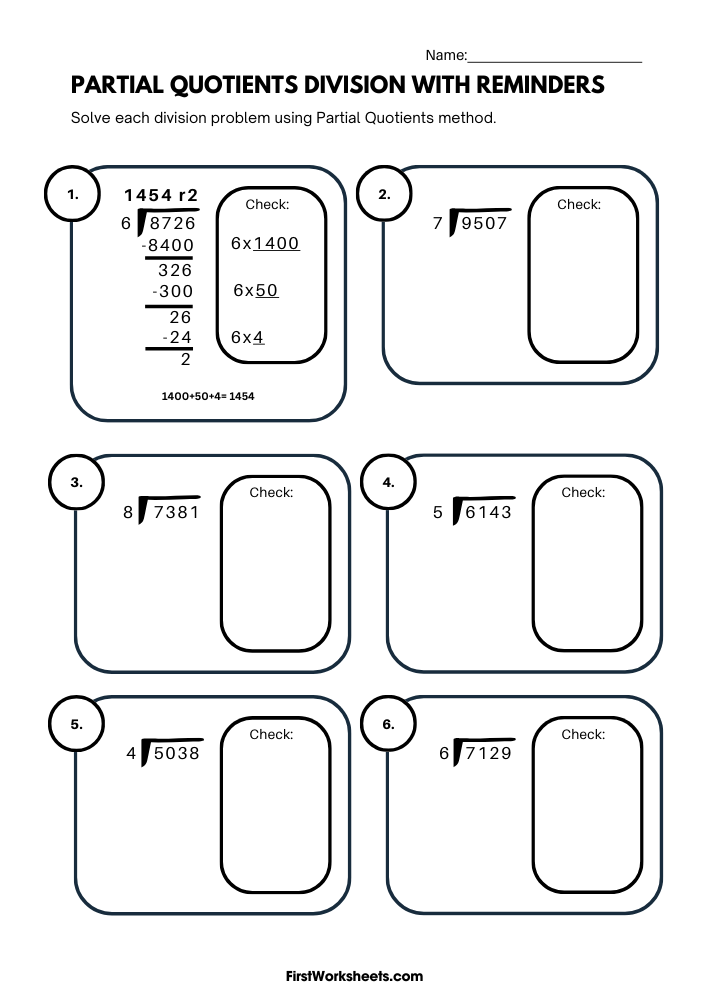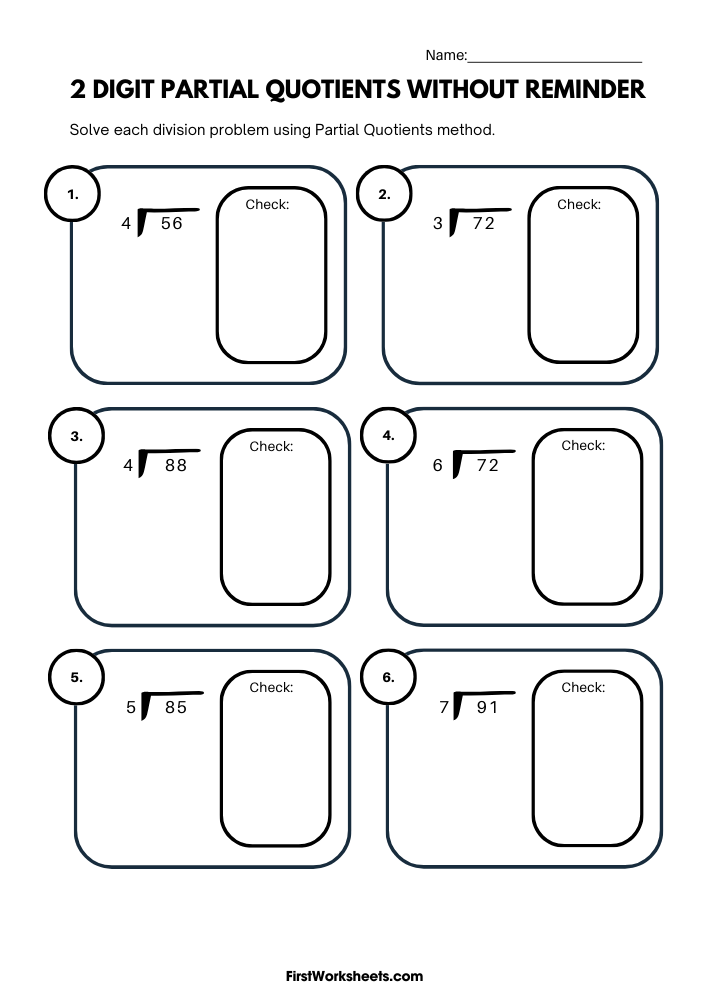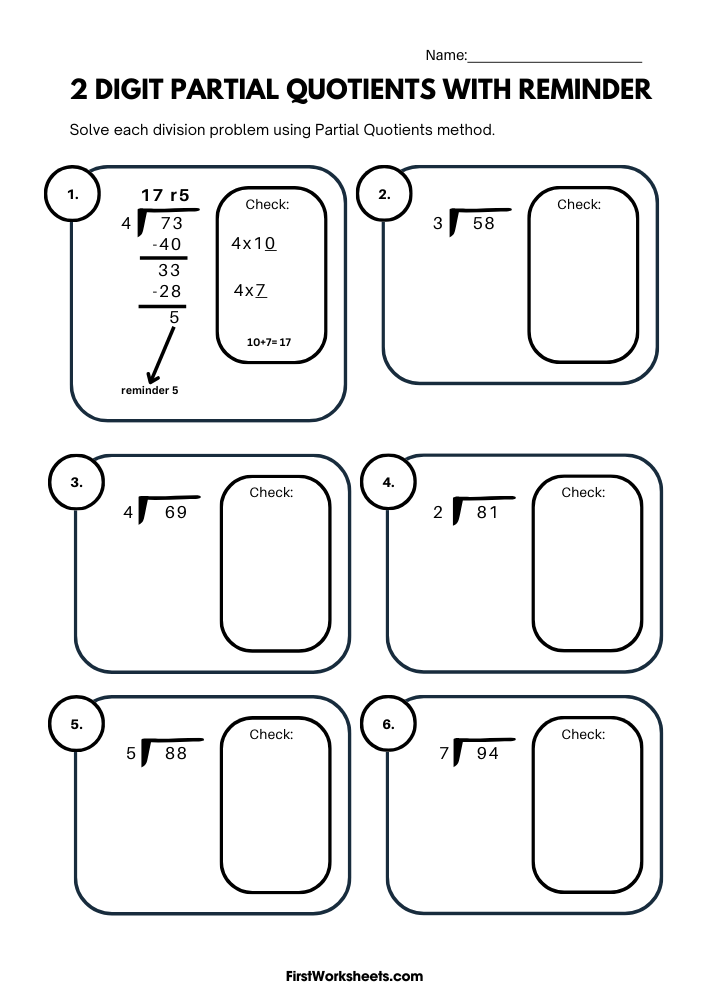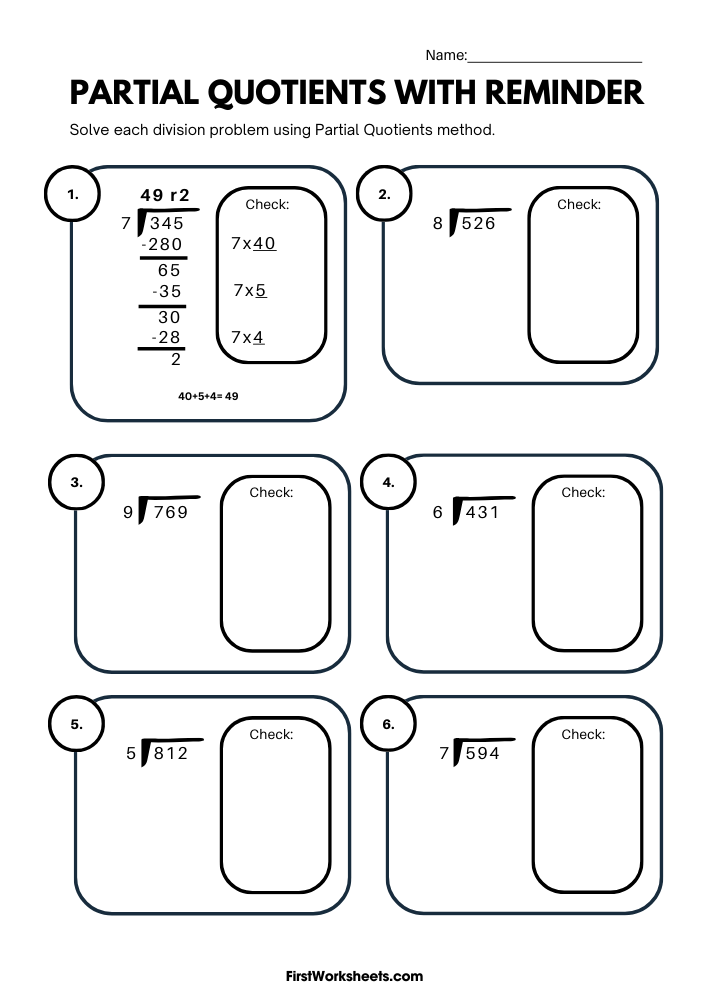Division with Partial Quotients Worksheets
This worksheet is designed to enhance students’ understanding of the partial quotient’s method for division. This method breaks down the division process into smaller, more manageable steps, allowing students to divide without the traditional long division setup.
Objective:
By the end of this worksheet, you should feel more comfortable with the partial quotients division method and be able to apply it to divide numbers efficiently.

Partial Quotients Division Anchor Chart
Step-by-Step Instructions
- Start with the Division Problem: Write down the number you’re dividing (dividend) and the number you’re dividing by (divisor).
- Example:
345 ÷ 7.
- Example:
- Guess and Subtract: Estimate how many times the divisor can fit into the dividend and subtract that multiple of the divisor.
- Example: Guess 40 times.
7 x 40 = 280. Write-280under345and subtract.
- Example: Guess 40 times.
- Repeat Until Small Number: Keep guessing and subtracting multiples of the divisor until you have a small number left, smaller than the divisor.
- Example:
65 - 7x9 (63) = 2.
- Example:
- Add Up the Guesses: The total of your guesses is the quotient (answer).
- Example:
40 + 9 = 49.
- Example:
- Find the Remainder: The small number left over is the remainder.
- Example:
Remainder = 2.
- Example:
Key Points
- Subtract in Parts: You don’t have to get the number of times right on the first try. Guess and subtract in parts.
- Remainders: If there’s a number left that’s smaller than the divisor, that’s your remainder.
- Repeat the Process: Keep subtracting until you can’t subtract anymore without going negative.
Tips and Tricks
- Estimate Wisely: Your first guess doesn’t have to be perfect, but closer guesses reduce the number of steps.
- Check Your Work: Multiply your quotient by the divisor and add the remainder. It should equal the original number.
- Practice Makes Perfect: The more you practice, the better you estimate.
You can create a helpful and informative anchor chart for the Partial Quotients Division Method using these sections.
